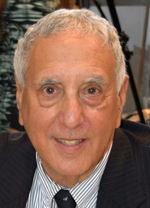By Donald H. Harrison

MORAGA, California – My friend Susan Ferraro, who lives in a rural part of Northern California. tells me that since about the age of 7, she had fantasized about becoming a Jew. It started, she said, when she read Anne Frank: Diary of a Young Girl. As children often do, she imagined herself invulnerable; death being something that unfortunately happened to other people. If she had been born Jewish, and living at that time, she could have prevented those Nazis from hurting Anne and her family and those hidden with them in the secret annex.
Some years later, Susan read Exodus by Leon Uris and that reinvigorated her fantasy. She imagined herself an Israeli pioneer, circumventing British blockades, strengthening the Yishuv, warding off Arab aggressors.
Susan married Joseph Ferraro, a handsome Italian-American lawyer with a penchant for cooking – what wife wouldn’t be envious of her? – and settled into a life of literature and freelance journalism. As a Harvard University PhD, she was a woman whose work was Donne. She never converted from Protestantism to Judaism, but for us Jews she always felt pronounced empathy.
While her two children were in elementary school, she faced the challenge of trying to explain how something like the Holocaust could occur. How does one explain hate in a home that has been filled only with love?
“How do we explain such things,” Susan pondered in an essay for The New York Times. “How do we speak the unspeakable to our children, tell them that people can be so cruel, so monstrous? How in a society that tries to be humane, do we tell our children that evil exists, that it’s human, and then help them accept and absorb the proof?”
As much as she was struggling with what to say to her children, she intuited that it might be even harder for Jewish parents to tell their children their lives would have been at risk during the Holocaust.
Before we visited Susan and Joe and enjoyed a wonderful evening of homemade pasta, chicken, carrots, and a spongy honey cake for dessert (the latter was Susan’s), she sent to Nancy and me a YouTube video produced by the Jewish Museum of New York about the artist Fred Terna. At the time of the production, Terna was 98 years old. He died this December 9 at age 99. His adopted son, Daniel, 63 years younger than his father, asked if art had helped him to survive concentration camp horrors including those of Theresienstadt and Auschwitz.
In a deep voice, tinged with the accent of Prague, Terna responded, “I am using painting rather shamelessly as a form of dealing with my internal life…. One of my functions is and was to bear witness, to be telling this story.”
“My father’s generation was (Franz) Kafka’s generation,” he added. “I consider myself a descendant of that culture. Painting was just a part of it.”
The scenes that he drew in Theresienstadt at great danger to himself were of what he saw there. “Great art, no, but it was a way of dealing with what was in front of me,” he declared. “You do whatever you can to carry that memory along.”
Susan was particularly affected by this video because she knew Terna and his family, and at a time when mortality stared back at her family, they gave her and Joe good counsel.
I’m not a Holocaust survivor, and neither is Susan. We are both of the baby-boomer generation. However, I think Terna’s words resonate with both of us. We don’t paint with oils or watercolors, but we try our best to do so with written words. It is our way to do whatever we can to pass memories along.
*
Donald H. Harrison is editor emeritus of San Diego Jewish World. He may be contacted via donald.harrison@sdjewishworld.com